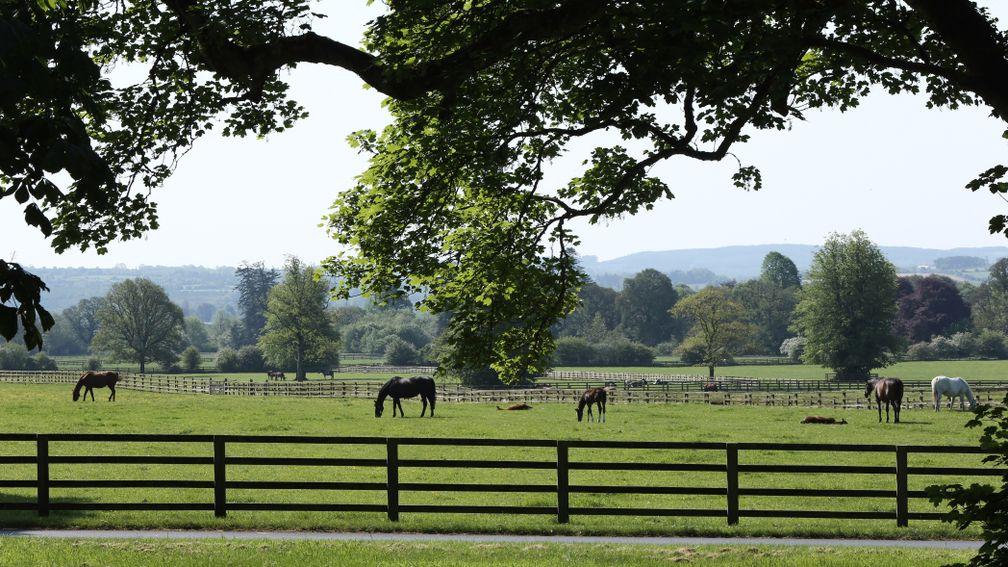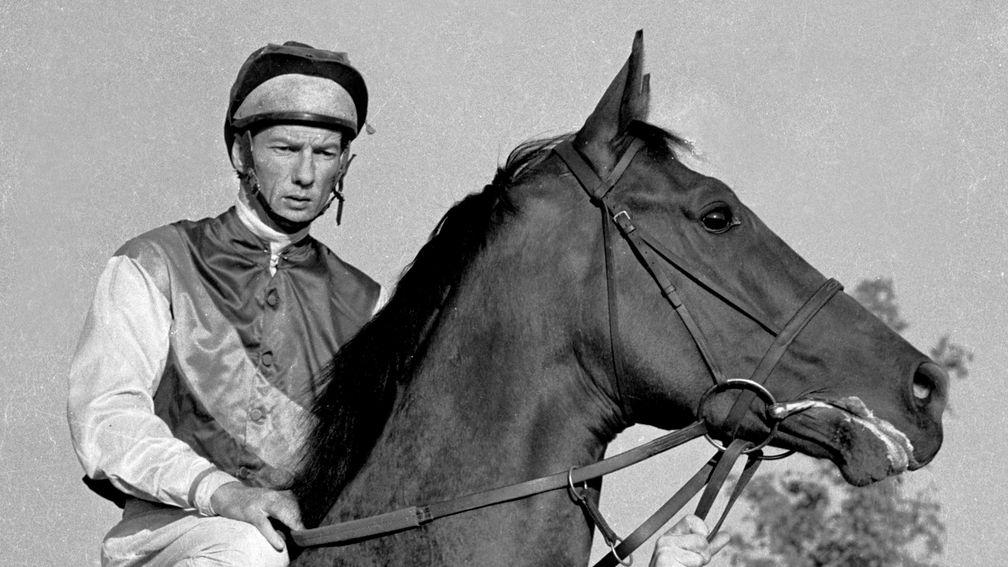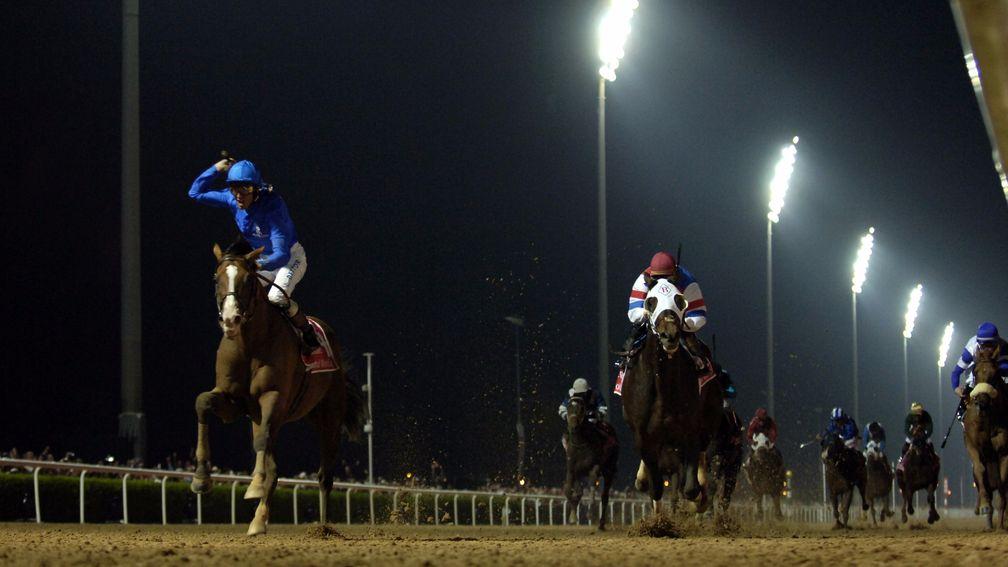- More
Three things we learned about the industry from the Weatherbys Fact Book

Good Morning Bloodstockis Martin Stevens' daily morning email and presented online as a sample. We are aware of an issue with some subscribers not receiving Wednesday's edition, which we are working hard to rectify.
Here, Martin picks out three of the most fascinating strands from the Weatherbys Fact Book. Subscribers can get more great insight from Martin every Monday to Friday.
All you need do is click on the link above, sign up and then read at your leisure each weekday morning from 7am.
The Weatherbys Fact Book is a fascinating historical document, delivering a snapshot of the state of breeding in Britain and Ireland, including numbers of active stallions and broodmares and the foals they have produced, as well as import and export figures.
The publication – including even seemingly trivial minutiae such as foals’ coat colours and the age of the broodmare population, which is nevertheless of importance to some – has been released online for free, and can be downloaded by clicking here.
Comparing the statistics contained in the 2022 edition with those in the oldest version I could find on my bookcase, which happened to be 2007, gives a fascinating insight into how the industry has changed, in some respects beyond all recognition.
I’ve listed a few of the more significant market adjustments below. Note that sometimes I’ve measured figures from 2021, as registrations for 2022 are still incomplete in many cases, against those from 2004, which are listed in the 2007 book. Prepare to feel old.
A less vibrant stallion scene
Figures for stallions standing in Britain and Ireland throw into sharp relief the reduced choice for broodmare owners in the current age.
There were 147 sires registered for covering standing in Britain in 2021, a huge 63 per cent fewer than the 394 on offer in 2004, in spite of the number of active broodmares in that country falling by 40 per cent in the same timeframe (from 11,463 to 8,191).
Meanwhile there were 229 registered stallions in Ireland in 2021, down 44 per cent from 407 in 2004, whereas the number of active broodmares decreased by just 19 per cent between those years (from 17,895 to 14,505).
Statistics for the number of mares each stallion covered reveal a cultural shift in breeding, with more horses being stood by smaller studs on an almost cottage-industry basis in the middle of the noughties, rather than being concentrated in fewer, bigger studs as they are these days.
It seems scarcely believable now, but in 2004 some 287 of the 394 active stallions in Britain (73 per cent) covered 20 mares or fewer, compared with 62 out of 147 (42 per cent) receiving such small books in 2021. The situation is less dramatic in Ireland, with 195 of the 407 active stallions (48 per cent) covering 20 mares or fewer in 2004, which is however still a fair bit more than the 77 out of 229 (34 per cent) sires doing those numbers the year before last.
The Weatherbys Fact Book of 2007 noted that this sector of the business was on the cusp of a major change, stating that “there have been 102 fewer stallions covering between one and 20 mares over this time period,” adding that “correspondingly, the number of stallions covering 100-plus broodmares has increased by ten.”
All this will come as no surprise to anyone who has been in the industry for more than a few decades or longer, or younger people who have looked in an old bloodstock magazine, and seen the large number of studs that have either ceased standing stallions or closed down altogether.
A less vibrant stallion market has several consequences. It could be argued that it means stud masters can afford to be less competitive with the fees they charge, although we are some way off a monopoly, and that there is less chance of rags-to-riches horses who turn out to be fine upgraders of stock or even breed-shapers emerging.
It also does little for enhancing the genetic diversity of the British and Irish thoroughbred, which goes for the following observation too.
No more North American gold rush
Those who witnessed the surge in transatlantic trade in the 1970s and 1980s, when North American pedigrees were heavily mined by European breeders, might be dumbfounded to learn that the flow of fillies and mares being brought from the US to Britain and Ireland slowed to a trickle of just 211 permanent imports in 2021.
It’s hardly breaking news that North American breeding is not as sought after on these shores as it was when the richest owners in the world battled over youngsters by the likes of Northern Dancer and Nijinsky, and later Kingmambo and Storm Cat, but the falling-off in demand is really quite stark.

That figure of 211 permanently imported fillies in 2021 is 36 per cent down on the 329 who made the same journey only five years before, and an enormous 69 per cent less than the 672 who were brought over in 2007, the last year before the Credit Crunch started to hit trade.
Perhaps the unspoken consensus is that the gold rush at Kentucky sales all those years ago served its purpose, with Northern Dancer now ubiquitous in European pedigrees, and that few North American sires have been shown to be indispensable ingredients in a mating in Britain and Ireland in recent times (nor been given the chance to do so, to be fair) – bar perhaps Scat Daddy, who died just as he had reached the peak of his powers, and War Front, who threw a few too many star two-year-olds that didn’t train on at three to remain a must-have item for long.
British and Irish breeders can decide for themselves whether they are missing a trick by not buying into North American bloodlines with the regularity they once did, but then again those in US sales companies and studs might not be rending their garments at the loss of business when other international markets have emerged and flourished in their place.
Either way, the Atlantic has never seemed so wide.
Evolving export markets
The new Weatherbys Fact Book also shows how the Middle Eastern export market has evolved in the last couple of decades.
Qatar has been by far the biggest new customer of British and Irish horses in percentage terms, with 105 colts, fillies and geldings having been permanently exported to the Gulf country in 2021 compared with just the one colt in 2004.
Between those years, permanent exports from Britain and Ireland to Bahrain have increased by 600 per cent from nine to 63; to Saudi Arabia have risen by 187 per cent from 54 to 155; and to Kuwait have climbed by 45 per cent from 37 to 54.
The United Arab Emirates, which contains the major racing hub of Dubai, has conversely fallen in importance as an export market for Britain and Ireland, and quite considerably so, with the 253 horses sent there permanently in 2021 down 41 per cent from 2004.
The figures also show how central Europe has become a crucial exporter of British and Irish thoroughbreds, especially lower to middle market horses from Ireland – thanks in large part to a charm offensive by Irish Thoroughbred Marketing.
The Czech Republic became home to 83 such horses (71 of those from Ireland) in 2021, compared with 23 in 2004, while Hungary welcomed 63 (42 of them Irish) the year before last, whereas it took in only eight horses 17 years before that.
Poland went from zero British and Irish exports in 2004 to 55 (50 of them from Ireland) in 2021, while even the smaller Slovakia went from three to 21 in that same period.
Sadly, the decline of Italy, the country of Tesio and nursery of stars such as Electrocutionist, Rakti and Ramonti as recently as this millennium, as a major racing nation continues.

Its permanent imports from Britain and Ireland fell by a quarter between 2020 and 2021 alone, from 670 horses to 499. That last figure is a mere shadow of the 1,115 that made the journey in 2004.
Seventeen years doesn’t seem that long ago in some respects; the likes of Frankie Dettori and Aidan O’Brien were at the top of their games then as they are now.
But the Weatherbys Fact Book serves as another reminder that, when it comes to the rapidly changing bloodstock industry, the past is a foreign country.
What do you think?
Share your thoughts with other Good Morning Bloodstock readers by emailing gmb@racingpost.com
Must-read story
“We really like the idea of a Nathaniel mating with her, we think he's going to be a very good broodmare sire,” says Jake Warren as he outlines the Highclere Stud mating plans.
Pedigree pick
Friday’s pedigree pick Duc Du Rene, chosen mostly on the strength of him being by top jumps sire Walk In The Park, contrived to fall in a bumper – but I’ve not lost faith in the sire’s ability to come up with a precocious National Hunt horse, so I’m going in again.
Moonlit Park, another by the son of Montjeu who makes her debut in the bumper at Carlisle today (4.45), is a half-sister to five winners including black-type scorers Danny Whizzbang and Lastbutnotleast, both of whom showed their hand early in their careers.
The Donald McCain-trained six-year-old is also a half-sister to Mr Grey Sky and Socially Distant, both of whom ran well in bumpers on their first starts, out of Grade 2-placed chaser Lakil Princess, a Bering half-sister to Grade 3 winner Moskova.
Got a friend that will like Good Morning Bloodstock?
Send them the link racingpost.com/goodmorningbloodstock and they can sign themselves up to receive it each weekday morning!
Don’t miss ANZ Bloodstock News
Subscribe for the latest bloodstock news from Australia, New Zealand and beyond.
Good Morning Bloodstock is our latest email newsletter. Martin Stevens, a doyen among bloodstock journalists, provides his take and insight on the biggest stories every morning from Monday to Friday
Published on inGood Morning Bloodstock
Last updated
- Heart or head? Limerick farmer faces enviable dilemma now he owns a highly valuable filly
- New Batsford boys bring fresh impetus and good value to Gloucestershire stud
- Cause for alarm as one of the most successful British jumps breeders switches focus to the Flat
- Kalpana likely to pull plenty of buyers towards Gravity at Park Paddocks
- Nap hand to note on a weekend when Auteuil ought to rival Cheltenham for your attention
- Heart or head? Limerick farmer faces enviable dilemma now he owns a highly valuable filly
- New Batsford boys bring fresh impetus and good value to Gloucestershire stud
- Cause for alarm as one of the most successful British jumps breeders switches focus to the Flat
- Kalpana likely to pull plenty of buyers towards Gravity at Park Paddocks
- Nap hand to note on a weekend when Auteuil ought to rival Cheltenham for your attention